Online Archaeology
During my Ancient History Competition, the right answer did not come from the archaeology headquarters. Instead, an outsider claimed the coveted and yet non-existent prize. Scott Hurst, a photographer from Texas, recognized accurately the Rampin Rider from the Acropolis museum. Without any previous archaeological knowledge he used the google search engine in order to find statues in museums. He employed various terms until he realized that the statue resembled closely the sixth century kouroi. After that the identification of the Rampin Rider was inevitable. The whole research took him 10 to 15 minutes.
Scott Hurst’s success triggered some thoughts I would like to share with you. In most European universities the identification of specific statues and ancient buildings has been for decades an uncontested part of the curriculum. Undergraduate students exercise their memory and their visual abilities for years in order to learn vast catalogues of archaeological material. I remember that when I took my exams in numismatics at the Greek State Foundation of Scholarships I must have learned by heart the exact provenance and date of more than 2000 coins. In the best of the cases, students are taught how to look at specialized catalogues, so that they may locate the artifact in question. Given the efficacy of internet search engines, should this mode of teaching become redundant? Instead, should we not teach our students how to use online resources, so that they may be able to identify the objects? Once this hurdle is overcome, they can focus on the more significant aspects of archaeology and history; that is the analysis and synthesis of the material.

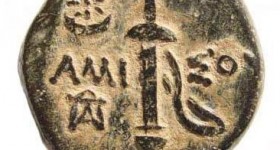
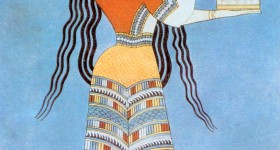

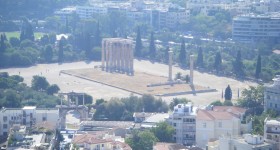
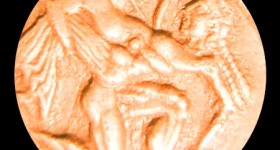
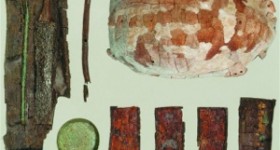
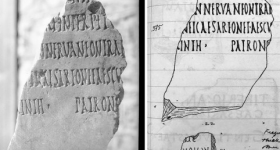
It makes sense to automate the routine tasks that can be automated, and to place the best available aids to efficiency at the disposal of researchers. Research in all disciplines has been made a great deal easier by the Internet. More can be done, and faster. More can therefore be published, and I am almost sure that this is also a blessing.
But there is still a case for making students perform routinely automated tasks manually, and routinely computer-aided tasks the hard way, at least a few times. They need to learn what our helpful computers do, and on the basis of what information (the features of an artefact, or the keywords in a literature search). There are at least two reasons for this. The first is that they will come to understand the limitations of what computers do for us, and in particular the kinds of things that they might miss. The second is that a student who knows what a computer does is in a good position to spot ways to go beyond the results that the computer gives, and indeed to write the next generation of programs and databases, or at least specifications for them.
The need for students to perform tasks the hard way is, I think, most obvious in mathematics. If, for example, a student knew how to give a computer functions to integrate, but had never worked out some basic integrals from first principles, could he or she be said to understand the computer’s answers? Turning to numismatics, if a student gave a computer an image of a coin and got the answer “Roman, minted in Gaul about 200 AD”, but did not understand how the computer reached that conclusion because he or she had never dated a coin the hard way, he or she might understand the answer so far as it went, but could not be said to have that answer rooted in a general understanding of numismatics. He or she would therefore only have a very limited understanding.
There are interesting questions here about degrees of understanding, and the extent to which knowledge of a wider context and of the methods by which answers were reached can be said to be necessary for understanding. I shall ask my philosophical computer to answer these questions for me, and shall meanwhile raise my hat to Plato for his suggestion (although not his conclusion) that knowledge requires a rational account, in addition to true belief (Theaetetus 201-202).
Technology is a life-saver, no doubt about that. The other day I found and downloaded about 40 articles on ancient history by using an on-line resource. A few years ago I would have to visit a library three times to find the same number of articles, and I would also have to stand for about 2-3 hours in front of the photocopying machine to get my copies. (By the way, photocopying in libraries is way overpriced.) I would also have to find an excuse not to go to work, which is next to impossible.
But technology should be used cautiously. A few weeks ago I was going through a book looking for somthing, and I caught myself wondering “Where on earth is that ‘search’ button?”!
“should we not teach our students how to use online resources, so that they may be able to identify the objects?”
Absolultely! It is also about creating the tools to ‘excavate’ the Web and collect useful and relevant resources.
See also this website that aggregates live online content on museum archaeology and archaeological heritage:
http://mashuparchaeology.humanities.manchester.ac.uk/index.php
In a perfect world I would prefer that archaeologists knew how to identify an artifact, while they would be able to analyse and synthesize vast numbers of data in order to reconstruct the ancient world. However, the BA in Archaeology in the UK lasts only for 3 years. Realistically, it is impossible that they will be able to learn both in such a short time. So, I was wondering, if we should split the profession in two. On one hand, training archaeoarchivists who will perform the job of the identifier. And on the other hand, reserving the gift of analysis for archaeologists, who will be more theoretical in their approaches. What do you think?
Hello Constantina
Your proposed division of labour might lead to greater efficiency. Division of labour often does. But I worry about taking the division right back into the training process. Can theoreticians be relied upon not to go way beyond what the evidence will support, if they do not know how the evidence is gathered? Can the gatherers of evidence be relied upon to notice the right things, if they do not know how the theoreticians will use their work? And who will have the inter-disciplinary skills to challenge new or established theories by reference to the evidence, or to propose new ways of gathering evidence in order to facilitate the advance of theory?
Again, I think it is interesting to draw comparisons with other disciplines. In at least some parts of the natural sciences, there are experimenters, and there are theoreticians who must not be let near a laboratory because they are bound to break something. There, the division of labour works well. But that might be at least partly because the claims of theory that must be tested by experiment, and the experimental results that call for theoretical interpretation, are precisely defined in mathematical terms. I do not think that the humanities have this advantage.
You are right that students should learn the methodologies of their trade. However, they should not have to learn every building, coin, or statue by heart. Besides, if this scheme worked for the sciences, I cannot see why it should not work for the humanities.
Hello Constantina in sunny Greece
I do not think that we disagree. I over-estimated how far you wanted to take your division of labour. And with yesterday’s announcement that funding for universities is going to be cut, efficiency is going to move sharply up the list of priorities.
Richard in not-so-sunny London